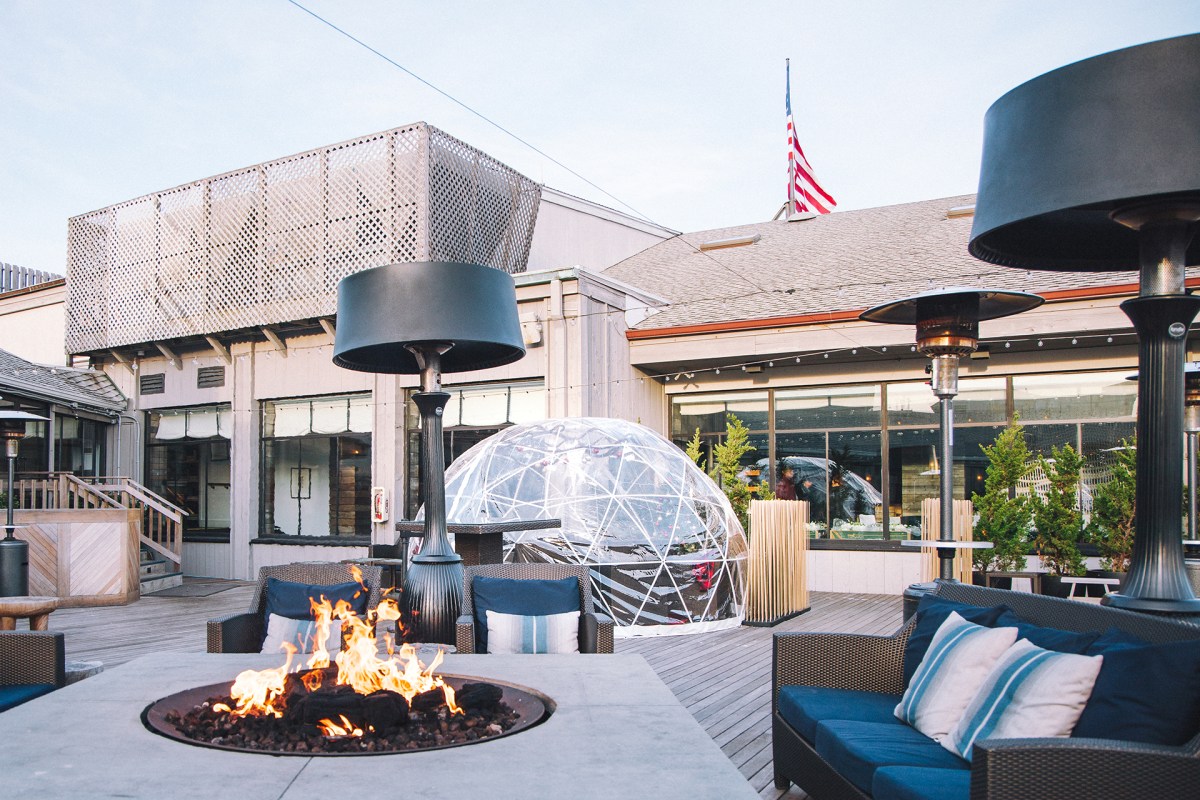Fiddler’s return comes in an unpredictable, authentic format

Matthew Murphy)
The Yiddish is addicting. Never heard a sentence in Yiddish, the language European Jews created and have spoken for decades? Not a problem.
Fiddler on the Roof, or Fidler Afn Dakh, had never been heard fully in Yiddish in America. But that all changed thanks to an idea sparked by director Joel Grey, who’s won Academy, Tony and Golden Globe awards, and the National Yiddish Theater Folksbiene.
Grey utilized the Yiddish translation, made famous in Israel by Shraga Friedman, added some stories by the well-known Yiddish author Sholem Aleichem and made it the most authentic version of Fiddler on the Roof audiences will ever hear.
“I knew they were originally in Yiddish, so when I saw the audition notice, that it’s in Yiddish and directed by Joel Grey, I thought, ‘it’s perfect,’” Jennifer Babiak, who plays family matriarch Golde, said. “I didn’t even know there was already a Yiddish translation they were using.”
The original eight-week production at the Museum of Jewish Heritage has spawned an Off-Broadway run at Stage 42, filling seats with nostalgia, tears and laughter. In mid-July, the Fiddler cast celebrated their one-year anniversary, and now it’s scheduled to run through Jan. 5, 2020.
Unlike other renditions of the famous play, you are actually traveling back in time, heading to the Russian shtetl of Anatevka in 1905.
One of the most unique parts of the musical, besides the Yiddish, is the script itself. Grey adds several different pieces of Aleichem’s works to make this a masterpiece, including the change of “If I Were a Rich Man” to “If I Were a Rothchild.”
“The biggest challenge of my career was mastering this role in Yiddish,” Steven Skybell, who stars as Tevye, said. “I’ve always loved languages. There was a certain affinity for me because of the challenge of a foreign language.”
His beard is black with a touch of gray by the chin. It’s fitting for this character, one who is extremely stressed out as he attempts to provide for Golde and their four daughters. The beard is perfectly suited to Tevye’s opening monologue discusses plagues throughout Jewish communities across Europe, expelling Jews from their shtetls, small towns or villages.
Since the play is in Yiddish, there are supertitles projected in English and Russian on both sides of the stage. While the thought of supertitles might initially seem distracting, they are placed on the front curtains, making it incredibly easy to follow and even if one doesn’t read them, the inflection in the cast’s voices makes the audience aware of the events happening in front of them.
The task of learning Yiddish, though, wasn’t a simple one.
“Learning the music in the language was a little easier because the emphasis is there for you,” Babiak said. “We basically had no lives that month. We rehearsed all day and went home to practice our Yiddish. I would listen and practice on every subway ride. It was amazing to see how it clicked for everyone.”

To make the cast accustomed to the script, Grey made the first week of rehearsals in English. Not only did it give the actors time to learn Yiddish, but it also gave them the important context that led to impeccable chemistry on the stage.
Eventually, everyone learned Yiddish. As soon as the play starts and you hear Der Fiddler (Lauren Jeanne Thomas), followed by the first words in Yiddish, goosebumps appear on your arms.
“Joel Grey has been around the block more than once, and he’s commented many times that he’s never seen a company of actors so respectful of each other and so insistent on telling the story together every night,” Skybell, who actually knew some Yiddish prior to this project, said.
The original Fiddler stories were written in Yiddish between 1894 and 1914, discussing Jewish life in the midst of pogroms and the struggles of Jewish families shying away from tradition. This version, though, has some lighthearted moments, with jokes by Der Rov (Adam B. Shapiro) and Tevye, going back-and-forth about what Jewish customs are based on the laws of the Torah.

But this Fiddler on the Roof is quite emotional, notably bringing this author to tears in Act II. The moments of Khave’s (Rosie Jo Needy) return after marrying Fyedke (Cameron Johnson), who isn’t Jewish, are quite intense. Tevye and Golde shun her.
“Every night, she comes on with such a broken heart,” Skybell said of Babiak’s performance.
But more importantly, it leads to a rare discussion of love between the older couple, who have been married for 25 years and met on the day of their wedding thanks to a shadchan (matchmaker).
“It’s so simple and they really do discover this idea of love that they never thought about for 25 years,” Babiak said. “It’s a moment in their lives that they look back on. For Golde, she really takes the time to answer him and really think about it. She looks back on this idea of love that she never even thought about or thought could happen to her. It’s a beautiful scene set on the two benches. It’s different than we’ve seen it before. It’s simple and you’re thrown into the text.”
This scene alone turns a historical musical into a spiritual journey by making everyone in the audience freeze.
“It’s a wonderful notion that Golde should have a wonderful singing voice,” Skybell said. “Often, the generic concept of Golde is that she’s a shrieky shrew. He [Grey] was really insistent that she is the little general of this family.”

The two realize they indeed love each other, yet there are moments of uncertainty. There are rare moments of quiet in the theater as they pause, emphasizing an emotion no other rendition of Fiddler can repeat.
This version of Fiddler has such high praises that Barry Manilow even visited the off-Broadway show on Aug. 1 to meet the cast and observe the one-of-a-kind play.
“Fiddler on the Roof is a bona fide classic,” Skybell said. “People have been talking about the demise of Yiddish for a long time, and something like this gives a jolt of life to Yiddishkeit.”
Everything about this musical is authentic, from the natural sounds of the Yiddish songs to even the emotions radiated into the audience from the stage.
The Stage 42 production opened doors in February and has since made enough waves that there is even an album coming out on Aug. 23, so people ca remember it once the Off-Broadway run is complete.
“We have a while still,” Babiak said. “We have people coming back and it’s amazing.”
To top off this show, Jackie Hoffman, who plays Yente, is hysterical. Her voice reminds you of your grandmother, and goosebumps arise when she says, “L’Shana Haba,
B’Yerushalayim,” which means “next year in Jerusalem,” known to conclude the Passover Seder.
The only odd part to this play is that Der Fiddler appears on top of a table, rather than the roof. But the uncommon role of putting Der Fiddler in the midst of the dancing and singing is actually genius, fitting into the musical’s role of shying away from tradition.
Fiddler on the Roof is at Stage 42, 422 W. 42nd St. in New York City. For more information or to purchase tickets, visit www.fiddlernyc.com or call the theater at 212-239-6200.






























